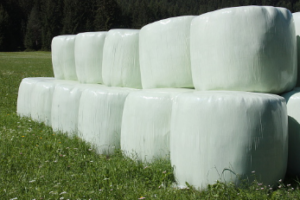What Is Baling Twine?
Baling twine is an indispensable tool on farms. It can be used for tying hay bales, hanging tarps or electric fence posts – and much more!
SilageWrap baling twine can be hazardous if not handled properly, especially for wildlife and domestic animals that ingest it and become ill or even die.
 Durability
Durability
Baling twine is a robust string-like cord to secure farm materials like hay bales. It can be made from natural materials like sisal but may also come in man-made polymers.
Baler twine is usually sold in spools for use with machines that bind material into bales. These machines enclose various agricultural and industrial products into compact bales for transportation or storage.
When selecting SilageWrap baling twine, choosing a high-quality, durable product suitable for your application is essential. The twine’s strength guarantees that your baler produces sufficient high-density, long-lasting bales.
When selecting twine for various uses, styles, sizes and weights, it is essential to understand which type best meets your requirements. In addition, different twine types offer stronger reinforcement for specific tasks, so you may need to decide on a particular style depending on which machine you plan to use.
Baling twine is typically composed of polypropylene, which boasts exceptional strength and durability. It’s resistant to most chemicals, floats in water, and can be kept wet or dry.
Another popular option is sisal, a natural material that can be treated to resist rot, mildew and rodent damage. In addition, it boasts higher tensile strength than synthetic twine and helps protect against wear from lifting and handling hay.
Another alternative is a net wrap, which combines strong polyester cloth and thick plastic netting to enclose and protect hay bales. This cost-effective solution protects crops in hot climates while allowing livestock access to the hay.
Baling twine is used for SilageWrap baling twine and various other applications around the barn, farm or yard. For example, it works great as a scraper for horse sweat, mends fences, reattach’s tractor parts and even as temporary horse lead!
Baling twine’s versatility is why it is often found in barns and around the ranch. The possibilities of what you can accomplish with it are virtually limitless!
Strength
When selecting baling twine, strength is critical. Your baler won’t have any mechanical issues with high-density bales if the twine has been made from suitable polymers and treated with stabilising additives. It keeps your bales fresh and stable, minimising spoilage risks.
Baling twine’s strength is measured by its twist per meter. This number reflects the extrusion process used to manufacture it and can range anywhere from one to four twists per meter. These twists give baling twine greater breaking strength than standard twine.
Quality baler twine can withstand loads up to 125kg, making it twice as strong as twine made from sisal fibres. Furthermore, this type of twine is durable and resistant to cracking or stress damage.
Baler twine comes in various colours and strengths to meet any farm’s requirements. Blue, green, yellow and orange are some of the more common choices; however, black is often preferred due to its durability and resistance to UV light damage.
Flexibility
Baling twine has many uses, but its primary function is to tie off and bale hay. It also secures livestock feed and keeps fences in place so a loose wire doesn’t injure animals.
Baler twine can be constructed out of either polypropylene or sisal. Polypropylene twine tends to be stronger and easier to manage than sisal, though both types have their respective uses.
Polypropylene twine is the most popular type used in the UK, as it can be recycled and reused to create other products. It comes in various colours and weights to meet all requirements – with most made-in-the-USA options offering guaranteed feet per container.
Farmers can reduce their waste disposal expenses and free up space to store spools of twine. It can also tie bales more securely, decreasing the amount of straw and cardboard wasted during baling operations.
Mini Skip Bins
You May Also Like
